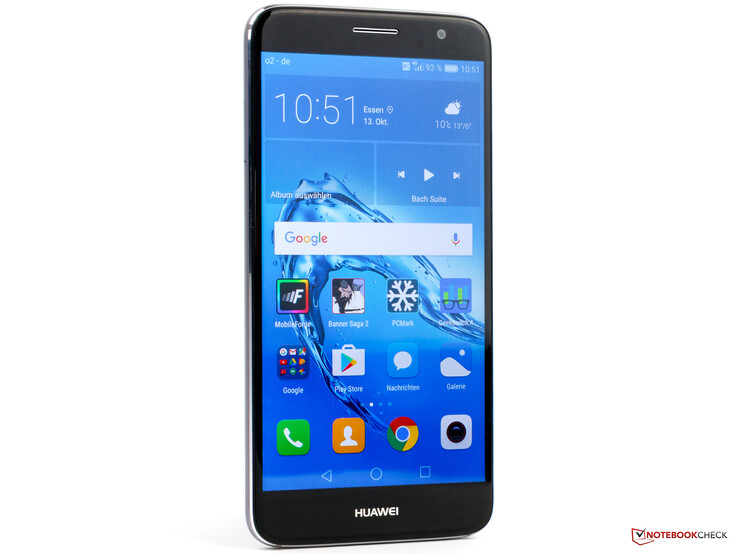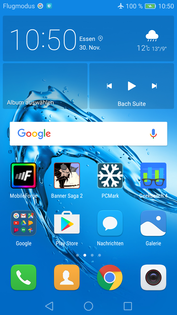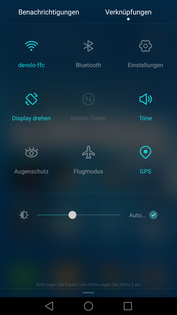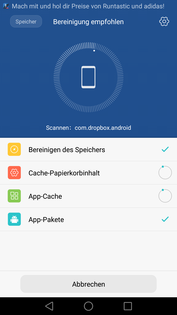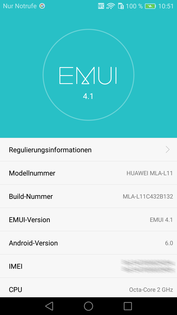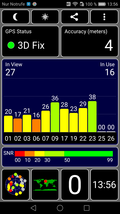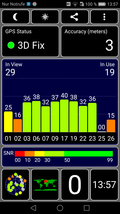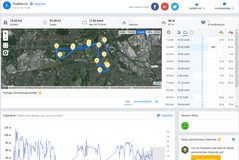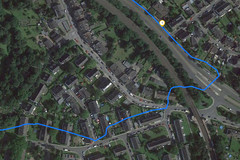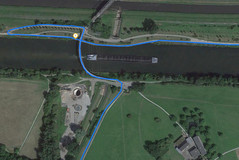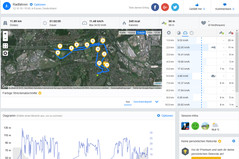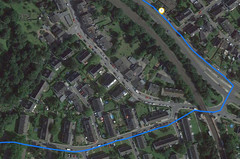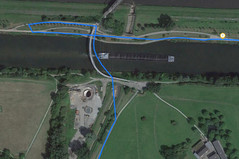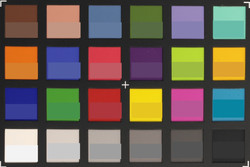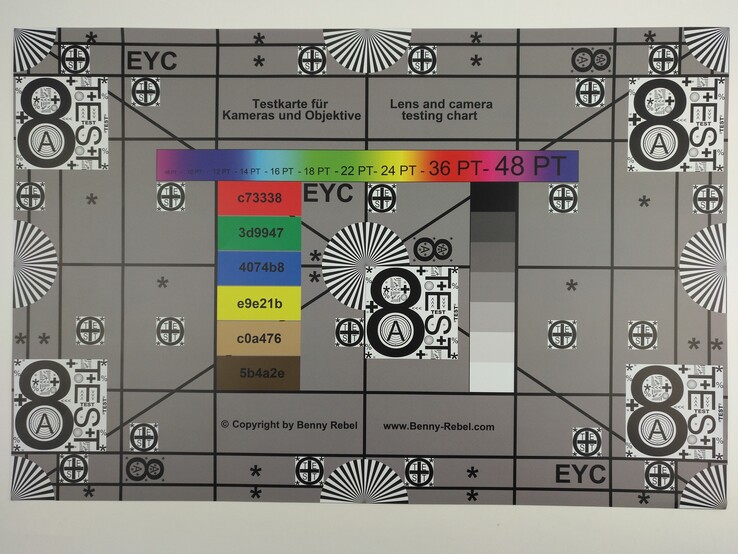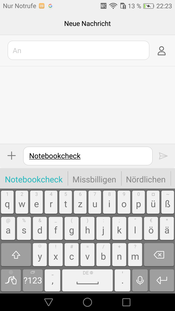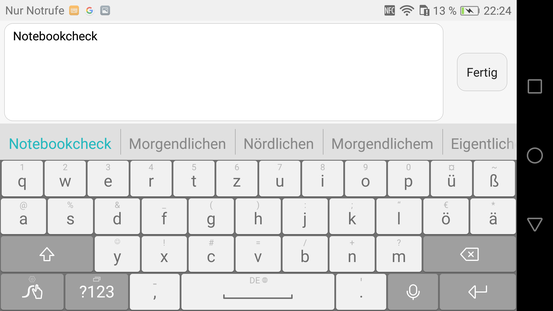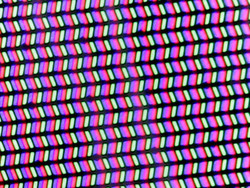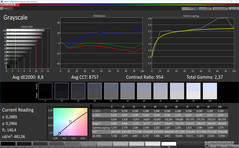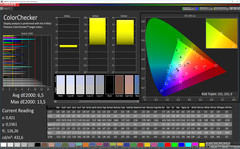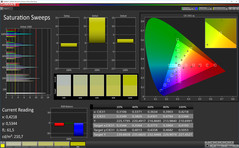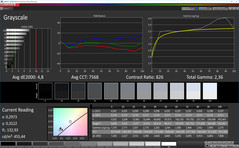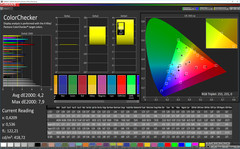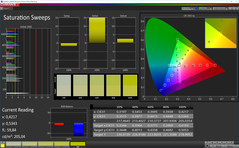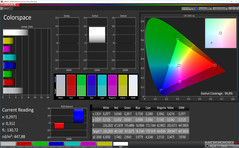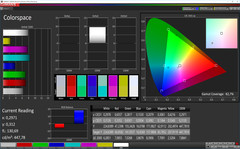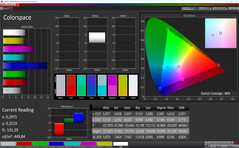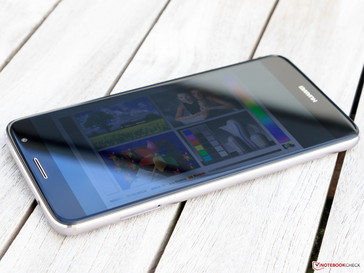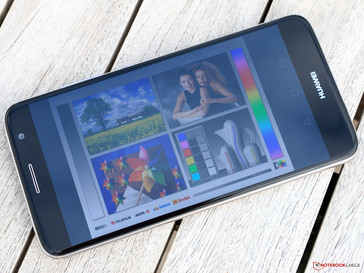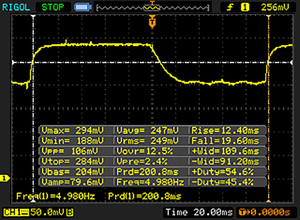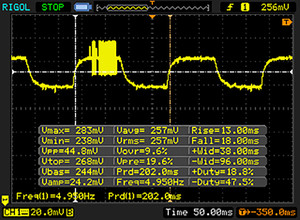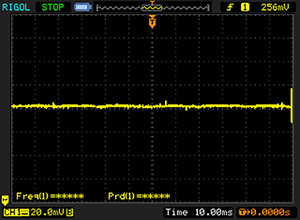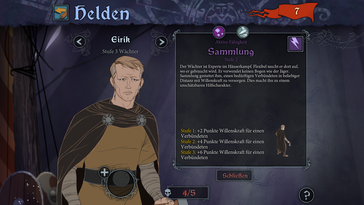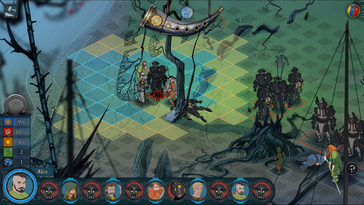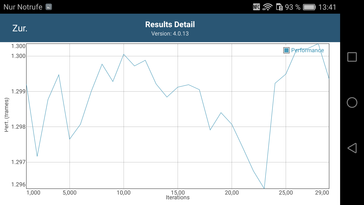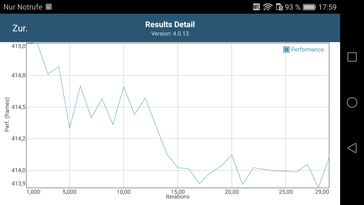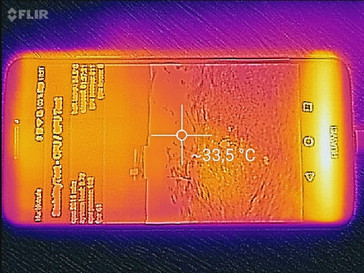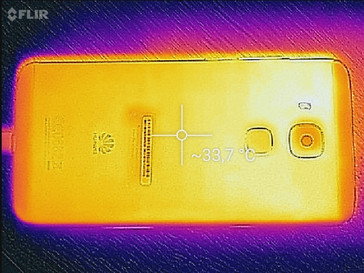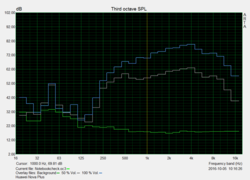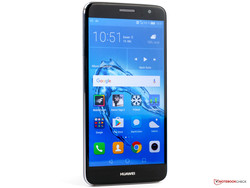Huawei Nova Plus Smartphone Review
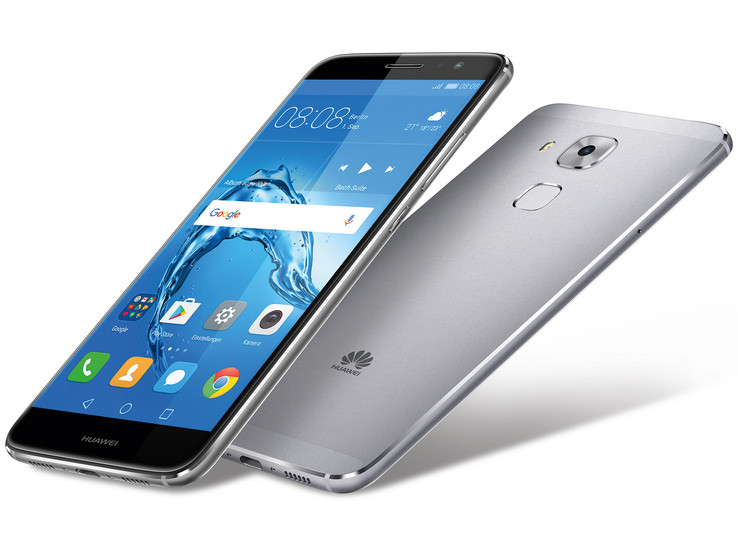
For the original German review, see here.
The Chinese manufacturer Huawei uses the Nova Plus to relaunch its mainstream smartphones under a different name. We review the larger Nova Plus, where the design has been inspired by the Mate series. The smaller Nova on the other hand, shows similarities with the Nexus 6P.
The specifications include a 5.5-inch Full HD IPS panel, a modern mainstream SoC, 3 GB of RAM as well as 32 GB internal storage, which can be expanded via a microSD-card. The battery capacity is quite generous at 3340 mAh and the 16 MP camera promises good pictures. The Nova Plus is also Huawei's first smartphone with Ultra-HD video recording.
Priced at 429 Euros (~$463/RRP), the test model is sitting in a very competitive segment with strong rivals such as the OnePlus 3, the Honor 8, the Asus ZenFone 3, the Samsung Galaxy A5, the Lenovo Moto Z Play and the ZTE Axon 7.
Case
The design of the Huawei Nova Plus is quite simple and is reminiscent of Huawei's own Mate series. It actually looks a bit like a thicker version of the Mate S. Thanks to the rounded edges, the smartphone feels good in the hand and leaves a sophisticated impression.
The aluminum chassis looks good and the tactile feel is great. The glass at the front is slightly rounded at the edges and leaves a good impression as well. Twisting attempts are no problem for the Nova Plus, and we had to apply quite a lot of pressure to create ripples on the screen.
Most of the gaps are small and even, only the plastic inserts for the antennas at the back are slightly weaker in this respect. The plastic frame between the case and the display glass is also rather inconvenient, both in terms of visuals as well as haptics.
The card tray is made of metal, but unfortunately, the color is different from the frame of the Nova Plus, which does not look good. The card tray itself can accommodate two Nano-SIM cards or one SIM with one microSD-card. The battery is integrated into the chassis.
Connectivity
As with many other devices in this segment, the Huawei Nova Plus is equipped with a USB Type-C port. However, it is still only a UB 2.0 connector. Video signals cannot be transferred via USB, but you can at least attach external storage drives and input devices to the smartphone thanks to OTG support.
According to the manufacturer, the microSD-card slot supports cards with a capacity of up to 128 GB. However, you can only save pictures and other media files on the additional storage; apps or parts of their files cannot be transferred. It is also not possible to format the card as an internal storage.
Furthermore, the Nova Plus is equipped with Bluetooth 4.1, NFC, an FM radio as well as a two-color notification LED, but the latter cannot be configured.
Software
The operating system of the Nova Plus is the quite modern Google Android 6.0 Marshmallow with Huawei's own user interface EMUI 4.1 (build: MLA-L11C432B132). An update to Android 7.0 Nougat with EMUI 5.0 is announced for Q1/2017.
A similar operating system is also used for the Huawei P9, and you can find more details in this review.
Communication and GPS
The Huawei Nova Plus leaves a good impression in terms of mobile communications and supports fast LTE Cat. 7 with a decent coverage of frequencies. However, the 3G network is a little sparse with just two bands. Nevertheless, we did not notice any limitations in the metropolitan area, where the 4G network is used most of the time anyway.
Within our comparison group, the Nova Plus is the only smartphone without 5.0 GHz WLAN support. You can only use the IEEE 802.11 standards b/g/n, while all the other rivals here cover at least the a-standard as well. The transfer rates are actually not bad for a 2.4 GHz Wi-Fi device, which is shown by our test with the reference router Linksys EA8500. It even manages better transfer rates than the ZenFone 3 with ac-Wi-Fi. Both the stability and the range were convincing.
| Networking | |
| iperf3 transmit AX12 | |
| OnePlus 3 | |
| ZTE Axon 7 | |
| Lenovo Moto Z Play | |
| Huawei Nova Plus | |
| Asus Zenfone 3 ZE552KL | |
| iperf3 receive AX12 | |
| ZTE Axon 7 | |
| OnePlus 3 | |
| Lenovo Moto Z Play | |
| Huawei Nova Plus | |
| Asus Zenfone 3 ZE552KL | |
The sat fix of the Huawei Nova Plus is pretty quick, even when we are still inside the building. It supports the GPS, GLONASS, and BeiDou satellite networks.
To get a better impression of the accuracy, we took the smartphone on a little bicycle ride and compared the results with the bicycle navigation device Garmin Edge 500.
Our reference device did have some minor problems at the beginning of the tour, which is why the Nova Plus performed better during the first 2 kilometers (~1.2 mi). From then on, the Garmin gave us more accurate position data, updated the location more frequently and was more accurate, so the path is more precise. Considering the initial section, the total difference between the two devices is not that big, and the smartphone manages a decent result, which should be more than sufficient for everyday navigation purposes.
Telephone Functions and Voice Quality
Huawei has made only slight visual changes in the appearance of the Phone app, but the functionality is basically identical to every other Android smartphone.
The voice quality of the Nova Plus is really good when you hold it to your ear. Both sides of the call can enjoy a clear conversation without any interruptions. The noise suppression works well and can block loud ambient noises, so the Nova user is still easy to understand, but it cannot filter all of them. Using the hands-free mode, we noticed small and frequent dropouts at the device, and we were not heard perfectly. Instead, our voice sounded very pressed and slightly distorted.
Cameras
The front camera of the Huawei Nova Plus has an 8 MP sensor with a fixed focus. Videos can be recorded in Full HD. So far not that spectacular, but the smartphone can really convince with its software and does not only offer the usual beauty mode with a soft focus, but also a make-up mode with different looks. It applies a soft focus to the cheeks and the forehead, colors eyelids as well as lips and extends eyelashes. The results look pretty good. The front camera works pretty well in general and is good for selfies.
The main camera takes pictures with 16 MP, and is equipped with a three-axis optical image stabilizer as well as auto focus. The Huawei Nova Plus is also the first smartphone from the Chinese manufacturer with Ultra-HD video recording. The results are quite good in daylight and convince with decent color balance and good dynamic range. The white balance is sometimes a bit too cool, but ambitious smartphone photographers can also use a professional mode with settings for the light sensitivity, shutter speed, focussing and white balance. The picture quality drops noticeably in low-light situations and details will appear blurry pretty quickly.
The quality of the video recordings is good, but the image stabilizer and the object tracking are unfortunately only available in the Full HD mode (30 fps). Videos at 60 frames per second are not supported in general. You also have to help the autofocus quite often. Sound is recorded in stereo and the result is decent.
We also checked the performance of the main camera under controlled lighting conditions. The results were not edited afterwards. Unlike our sample shots, the white balance is a bit too warm in the ColorChecker Passport picture. Colors are pretty saturated to produce more vivid pictures.
The sharpness of the picture can be evaluated with our test chart. The details in the center in particular are captured really well by the Huawei Nova Plus and the color gradients also leave a good impression. However, the contrast drops visibly towards the edges.
Accessories and Warranty
The box of the Huawei Nova Plus includes a modular power adapter with a nominal output of 10 watts (5V, 2A), a USB cable (Type-A to Type-C), a headset, a SIM tool, a quick-start guide and a leaflet with security information. The manufacturer does not offer any dedicated accessories.
The warranty period is 24 months. Please see our Guarantees, Return Policies & Warranties FAQ for country-specific information.
Input Devices and Handling
The capacitive touchscreen of the Huawei Nova Plus recognizes up to ten inputs simultaneously and provides very good gliding capabilities. Inputs are also executed quickly and reliably in the peripheral areas.
The manufacturer uses its own Swype keyboard layout, which also supports swipe inputs and word predictions. The keys are a bit too crowded for our taste, but this is obviously no problem since you can just install any other keyboard from the Play Store.
The physical buttons have a good pressure point and leave a sophisticated impression. The fingerprint scanner at the back unlocks the smartphone very quickly and recognizes stored fingerprints very reliably. You can also use the surface to trigger the camera or scroll through your pictures, show the notification bar and accept or end calls, respectively.
Display
The Huawei Nova Plus has a 5.5-inch IPS display with 1920x1080 pixels. The resulting pixel density of 401 PPI ensures crisp contents. We can measure a luminance of up to 504 nits, which is a good result. At 0.5 cd/m², the black value results in a contrast ratio of 970:1. This is also a good result, but it drops slightly to 949:1 with an even distribution of dark and bright surfaces (APL 50). The luminance is not further increased with the activated brightness sensor.
We could not determine any clouding on our test model. You will like the optional mode to improve the visibility if you often read in the dark. It filters blue light and therefore reduces strain on the eyes.
| |||||||||||||||||||||||||
Brightness Distribution: 90 %
Center on Battery: 485 cd/m²
Contrast: 970:1 (Black: 0.5 cd/m²)
ΔE ColorChecker Calman: 4.2 | ∀{0.5-29.43 Ø4.83}
ΔE Greyscale Calman: 4.8 | ∀{0.09-98 Ø5.1}
Gamma: 2.36
CCT: 7568 K
| Huawei Nova Plus IPS, 1920x1080, 5.5" | OnePlus 3 Optic-AMOLED, 1920x1080, 5.5" | Honor 8 IPS, 1920x1080, 5.2" | Asus Zenfone 3 ZE552KL IPS, 1920x1080, 5.5" | ZTE Axon 7 AMOLED, 2560x1440, 5.5" | Samsung Galaxy A5 2016 Super AMOLED, 1920x1080, 5.2" | Lenovo Moto Z Play AMOLED, 1920x1080, 5.5" | |
|---|---|---|---|---|---|---|---|
| Screen | -8% | -9% | -1% | -20% | 22% | 25% | |
| Brightness middle | 485 | 419 -14% | 451 -7% | 658 36% | 328 -32% | 378 -22% | 509 5% |
| Brightness | 481 | 431 -10% | 443 -8% | 633 32% | 334 -31% | 380 -21% | 511 6% |
| Brightness Distribution | 90 | 84 -7% | 93 3% | 93 3% | 88 -2% | 91 1% | 93 3% |
| Black Level * | 0.5 | 0.4 20% | 0.66 -32% | ||||
| Contrast | 970 | 1128 16% | 997 3% | ||||
| Colorchecker dE 2000 * | 4.2 | 4.1 2% | 5.4 -29% | 4.9 -17% | 4.6 -10% | 1.95 54% | 2.2 48% |
| Colorchecker dE 2000 max. * | 7.9 | 12 -52% | 9.9 -25% | 9.1 -15% | 14.7 -86% | 3.09 61% | 5.8 27% |
| Greyscale dE 2000 * | 4.8 | 3.3 31% | 6.7 -40% | 5.8 -21% | 2.8 42% | 1.86 61% | 2 58% |
| Gamma | 2.36 93% | 2.1 105% | 2.33 94% | 2.26 97% | 2.29 96% | 2.13 103% | 2.25 98% |
| CCT | 7568 86% | 6550 99% | 8262 79% | 7840 83% | 6612 98% | 6376 102% | 6768 96% |
| Color Space (Percent of AdobeRGB 1998) | 89.38 | ||||||
| Color Space (Percent of sRGB) | 100 |
* ... smaller is better
Colors on the Huawei Nova Plus appear rich and crisp. We had a closer look at them with a spectrophotometer and the analysis software CalMAN. The test model manages an average position within our comparison group in terms of colors, and stays below a DeltaE of 5 both for the ColorChecker as well as the grayscale. This is at least the case for the color profile Warm; the colors are much cooler with the default profile, and the deviations are also higher as a result. Red is the biggest outlier at a DeltaE of 7.9, which is a result of the oversaturated colors. However, this is not noticeable in practice.
Outdoors, the Huawei Nova Plus leaves a good impression and you can see the display contents in most lighting conditions. Thanks to the high luminance and the good contrast ratio, you can also see the display content on bright days. You should, however, avoid direct sunlight if you want to read long texts.
Display Response Times
| ↔ Response Time Black to White | ||
|---|---|---|
| 32 ms ... rise ↗ and fall ↘ combined | ↗ 12.4 ms rise | |
| ↘ 19.6 ms fall | ||
| The screen shows slow response rates in our tests and will be unsatisfactory for gamers. In comparison, all tested devices range from 0.1 (minimum) to 240 (maximum) ms. » 85 % of all devices are better. This means that the measured response time is worse than the average of all tested devices (20.5 ms). | ||
| ↔ Response Time 50% Grey to 80% Grey | ||
| 31 ms ... rise ↗ and fall ↘ combined | ↗ 13 ms rise | |
| ↘ 18 ms fall | ||
| The screen shows slow response rates in our tests and will be unsatisfactory for gamers. In comparison, all tested devices range from 0.165 (minimum) to 636 (maximum) ms. » 39 % of all devices are better. This means that the measured response time is similar to the average of all tested devices (32 ms). | ||
Screen Flickering / PWM (Pulse-Width Modulation)
| Screen flickering / PWM not detected | |||
In comparison: 53 % of all tested devices do not use PWM to dim the display. If PWM was detected, an average of 8320 (minimum: 5 - maximum: 343500) Hz was measured. | |||
Performance
Huawei does not use its own Kirin SoC for the Nova Plus, but Qualcomm's Snapdragon 625. The mainstream SoC uses eight power efficient Cortex-A53 cores clocked at up to 2.0 GHz. Graphics are handled by the Adreno 506, and the SoC is supported by 3 GB of RAM, which is typical for this class. Smartphones such as the Lenovo Moto Z Play and the ZenFone 3 use the same components.
The benchmark results of the Nova Plus are on par with the similarly equipped competitors. It can only clearly beat the Moto Z Play in Geekbench 4, which is probably a result of its missing 64-bit support. If you are looking for more performance, the OnePlus 3 or the Axon 7 might be a good choice, because both models are equipped with modern high-end SoCs.
The system benchmarks show a mixed picture. While the Nova Plus is slightly ahead of the other Snapdragon 625 smartphones in AnTuTu and Basemark OS II, it is surprisingly slow in PCMark. We also noticed occasional stutters in practice. It seems EMUI does not run as smoothly as usual without Kirin SoC.
| AnTuTu v6 - Total Score (sort by value) | |
| Huawei Nova Plus | |
| ZTE Axon 7 | |
| Samsung Galaxy A5 2016 | |
| Asus Zenfone 3 ZE552KL | |
| Honor 8 | |
| OnePlus 3 | |
| Lenovo Moto Z Play | |
| Geekbench 4.0 | |
| 64 Bit Single-Core Score (sort by value) | |
| Huawei Nova Plus | |
| ZTE Axon 7 | |
| Asus Zenfone 3 ZE552KL | |
| Honor 8 | |
| OnePlus 3 | |
| Lenovo Moto Z Play | |
| 64 Bit Multi-Core Score (sort by value) | |
| Huawei Nova Plus | |
| ZTE Axon 7 | |
| Asus Zenfone 3 ZE552KL | |
| Honor 8 | |
| OnePlus 3 | |
| Lenovo Moto Z Play | |
| 3DMark | |
| 1280x720 offscreen Ice Storm Unlimited Score (sort by value) | |
| Huawei Nova Plus | |
| ZTE Axon 7 | |
| Samsung Galaxy A5 2016 | |
| Asus Zenfone 3 ZE552KL | |
| Honor 8 | |
| OnePlus 3 | |
| Lenovo Moto Z Play | |
| 1280x720 offscreen Ice Storm Unlimited Graphics Score (sort by value) | |
| Huawei Nova Plus | |
| ZTE Axon 7 | |
| Samsung Galaxy A5 2016 | |
| Asus Zenfone 3 ZE552KL | |
| Honor 8 | |
| OnePlus 3 | |
| Lenovo Moto Z Play | |
| 1280x720 offscreen Ice Storm Unlimited Physics (sort by value) | |
| Huawei Nova Plus | |
| ZTE Axon 7 | |
| Samsung Galaxy A5 2016 | |
| Asus Zenfone 3 ZE552KL | |
| Honor 8 | |
| OnePlus 3 | |
| Lenovo Moto Z Play | |
| 2560x1440 Sling Shot OpenGL ES 3.0 (sort by value) | |
| Huawei Nova Plus | |
| ZTE Axon 7 | |
| Samsung Galaxy A5 2016 | |
| Asus Zenfone 3 ZE552KL | |
| Honor 8 | |
| OnePlus 3 | |
| Lenovo Moto Z Play | |
| 2560x1440 Sling Shot OpenGL ES 3.0 Graphics (sort by value) | |
| Huawei Nova Plus | |
| ZTE Axon 7 | |
| Samsung Galaxy A5 2016 | |
| Asus Zenfone 3 ZE552KL | |
| Honor 8 | |
| OnePlus 3 | |
| Lenovo Moto Z Play | |
| 2560x1440 Sling Shot OpenGL ES 3.0 Physics (sort by value) | |
| Huawei Nova Plus | |
| ZTE Axon 7 | |
| Samsung Galaxy A5 2016 | |
| Asus Zenfone 3 ZE552KL | |
| Honor 8 | |
| OnePlus 3 | |
| Lenovo Moto Z Play | |
| GFXBench (DX / GLBenchmark) 2.7 | |
| T-Rex Onscreen (sort by value) | |
| Huawei Nova Plus | |
| ZTE Axon 7 | |
| Samsung Galaxy A5 2016 | |
| Asus Zenfone 3 ZE552KL | |
| Honor 8 | |
| OnePlus 3 | |
| Lenovo Moto Z Play | |
| 1920x1080 T-Rex Offscreen (sort by value) | |
| Huawei Nova Plus | |
| ZTE Axon 7 | |
| Samsung Galaxy A5 2016 | |
| Asus Zenfone 3 ZE552KL | |
| Honor 8 | |
| OnePlus 3 | |
| Lenovo Moto Z Play | |
| GFXBench 3.0 | |
| on screen Manhattan Onscreen OGL (sort by value) | |
| Huawei Nova Plus | |
| ZTE Axon 7 | |
| Samsung Galaxy A5 2016 | |
| Asus Zenfone 3 ZE552KL | |
| Honor 8 | |
| OnePlus 3 | |
| Lenovo Moto Z Play | |
| 1920x1080 1080p Manhattan Offscreen (sort by value) | |
| Huawei Nova Plus | |
| ZTE Axon 7 | |
| Samsung Galaxy A5 2016 | |
| Asus Zenfone 3 ZE552KL | |
| Honor 8 | |
| OnePlus 3 | |
| Lenovo Moto Z Play | |
| GFXBench 3.1 | |
| on screen Manhattan ES 3.1 Onscreen (sort by value) | |
| Huawei Nova Plus | |
| ZTE Axon 7 | |
| Asus Zenfone 3 ZE552KL | |
| Honor 8 | |
| OnePlus 3 | |
| Lenovo Moto Z Play | |
| 1920x1080 Manhattan ES 3.1 Offscreen (sort by value) | |
| Huawei Nova Plus | |
| ZTE Axon 7 | |
| Asus Zenfone 3 ZE552KL | |
| Honor 8 | |
| OnePlus 3 | |
| Lenovo Moto Z Play | |
| GFXBench | |
| on screen Car Chase Onscreen (sort by value) | |
| Huawei Nova Plus | |
| ZTE Axon 7 | |
| Asus Zenfone 3 ZE552KL | |
| Honor 8 | |
| OnePlus 3 | |
| Lenovo Moto Z Play | |
| 1920x1080 Car Chase Offscreen (sort by value) | |
| Huawei Nova Plus | |
| ZTE Axon 7 | |
| Asus Zenfone 3 ZE552KL | |
| Honor 8 | |
| OnePlus 3 | |
| Lenovo Moto Z Play | |
| PCMark for Android - Work performance score (sort by value) | |
| Huawei Nova Plus | |
| ZTE Axon 7 | |
| Samsung Galaxy A5 2016 | |
| Asus Zenfone 3 ZE552KL | |
| Honor 8 | |
| OnePlus 3 | |
| Lenovo Moto Z Play | |
Subjectively, the web browsing experience on the Huawei Nova Plus is good. Only a look at the browser benchmarks will reveal that the smartphone is not quite as fast as the competition. Our test model is usually pretty far at the bottom of the rankings, only the Galaxy A5 is even slower.
| WebXPRT 2015 - Overall (sort by value) | |
| Huawei Nova Plus | |
| ZTE Axon 7 | |
| Samsung Galaxy A5 2016 | |
| Asus Zenfone 3 ZE552KL | |
| Honor 8 | |
| OnePlus 3 | |
| Lenovo Moto Z Play | |
| Octane V2 - Total Score (sort by value) | |
| Huawei Nova Plus | |
| ZTE Axon 7 | |
| Samsung Galaxy A5 2016 | |
| Asus Zenfone 3 ZE552KL | |
| Honor 8 | |
| OnePlus 3 | |
| Lenovo Moto Z Play | |
| JetStream 1.1 - Total Score (sort by value) | |
| Huawei Nova Plus | |
| ZTE Axon 7 | |
| Samsung Galaxy A5 2016 | |
| Asus Zenfone 3 ZE552KL | |
| Honor 8 | |
| OnePlus 3 | |
| Lenovo Moto Z Play | |
| Mozilla Kraken 1.1 - Total (sort by value) | |
| Huawei Nova Plus | |
| ZTE Axon 7 | |
| Samsung Galaxy A5 2016 | |
| Asus Zenfone 3 ZE552KL | |
| Honor 8 | |
| OnePlus 3 | |
| Lenovo Moto Z Play | |
* ... smaller is better
Huawei has equipped the Nova Plus with 32 GB eMMC flash storage, which performs well in all areas. The performance of the micro-SD slot on the other hand is less convincing and we can only measure mediocre results in combination with our reference card Toshiba Exceria Pro M401. Most rivals are much better in this respect.
| Huawei Nova Plus Adreno 506, 625, 32 GB eMMC Flash | ZTE Axon 7 Adreno 530, 820 MSM8996, 64 GB eMMC Flash | Samsung Galaxy A5 2016 Mali-T720 MP2, 7580 Octa, 16 GB eMMC Flash | Asus Zenfone 3 ZE552KL Adreno 506, 625, 64 GB eMMC Flash | Honor 8 Mali-T880 MP4, Kirin 950, 32 GB eMMC Flash | OnePlus 3 Adreno 530, 820 MSM8996, 64 GB UFS 2.0 Flash | Lenovo Moto Z Play Adreno 506, 625, 32 GB eMMC Flash | |
|---|---|---|---|---|---|---|---|
| AndroBench 3-5 | 81% | -35% | 53% | 8% | 101% | 31% | |
| Sequential Read 256KB | 241.6 | 406.5 68% | 209.4 -13% | 282 17% | 247.5 2% | 408.7 69% | 254.8 5% |
| Sequential Write 256KB | 82.1 | 150.9 84% | 60.4 -26% | 188 129% | 119.3 45% | 153.3 87% | 73.1 -11% |
| Random Read 4KB | 35.64 | 121.1 240% | 22.9 -36% | 74 108% | 34.16 -4% | 137.6 286% | 38.78 9% |
| Random Write 4KB | 30.12 | 16.22 -46% | 11.2 -63% | 7.4 -75% | 31.5 5% | 18.23 -39% | 45.58 51% |
| Sequential Read 256KB SDCard | 41.64 | 78.4 88% | 79.2 90% | 53.7 29% | 74.6 79% | ||
| Sequential Write 256KB SDCard | 33.32 | 51.3 54% | 50.1 50% | 23.59 -29% | 50.6 52% |
Games
Even though Qualcomm's Adreno 506 in the Nova Plus is not one of the most powerful GPUs, it does support modern graphics APIs such as OpenGL ES 3.2, but unfortunately not Vulkan 1.0. The performance is more than sufficient for most games on the Play Store and provides a smooth gaming experience. However, more challenging games such “Asphalt 8” show that the GPU does not have a lot of headroom, but it can still run the game at High settings. The complex fantasy RPG “Banner Saga 2” also ran well on the test model and the loading times were conveniently short.
We could not determine any hardware issues either. The sensors worked well, and the touchscreen executed inputs quickly. However, the speaker can be easily covered when you play in landscape mode.
Banner Saga 2
| Asphalt 8: Airborne | |||
| Settings | Value | ||
| high | 28 fps | ||
| very low | 29 fps | ||
Emissions
Temperature
The surface temperatures of the Huawei Nova Plus are not very high, even under load, and only some spots will exceed 39 °C (~102 °F). We use the GFXBench Battery Test to check how the heat development is affecting the SoC of the smartphone. This test repeats a graphics benchmark thirty times in a row while the tool logs the battery capacity as well as the frame rates. Fortunately, the Nova Plus does not have any problems with the T-Rex (OpenGL ES 2.0) or the more complex Manhattan version (OpenGL ES 3.1).
(+) The maximum temperature on the upper side is 39.2 °C / 103 F, compared to the average of 35.2 °C / 95 F, ranging from 21.9 to 247 °C for the class Smartphone.
(+) The bottom heats up to a maximum of 33.2 °C / 92 F, compared to the average of 34 °C / 93 F
(±) In idle usage, the average temperature for the upper side is 32.2 °C / 90 F, compared to the device average of 32.9 °C / 91 F.
Speakers
The Huawei Nova Plus has one mono speaker located at the bottom edge, which is quite powerful at more than 87 dB(A). It even sounds pretty good at low volumes and provides a decent sound for everyday tasks. Once you crank it up, the result will not be that balanced anymore, and puts too much emphasis on the high tones. Bass is basically non-existent, and mids are quite linear, but do not stand a chance against the much louder high tones.
The 3.5 mm stereo jack provides good sound quality, with subjectively very low noise.
Huawei Nova Plus audio analysis
(+) | speakers can play relatively loud (87.4 dB)
Bass 100 - 315 Hz
(-) | nearly no bass - on average 28.5% lower than median
(-) | bass is not linear (15.9% delta to prev. frequency)
Mids 400 - 2000 Hz
(+) | balanced mids - only 3.5% away from median
(+) | mids are linear (5% delta to prev. frequency)
Highs 2 - 16 kHz
(±) | higher highs - on average 5.7% higher than median
(+) | highs are linear (3.3% delta to prev. frequency)
Overall 100 - 16.000 Hz
(±) | linearity of overall sound is average (21.3% difference to median)
Compared to same class
» 39% of all tested devices in this class were better, 8% similar, 53% worse
» The best had a delta of 12%, average was 36%, worst was 134%
Compared to all devices tested
» 58% of all tested devices were better, 7% similar, 35% worse
» The best had a delta of 4%, average was 24%, worst was 134%
Honor 8 audio analysis
(+) | speakers can play relatively loud (84.7 dB)
Bass 100 - 315 Hz
(-) | nearly no bass - on average 24% lower than median
(±) | linearity of bass is average (12.1% delta to prev. frequency)
Mids 400 - 2000 Hz
(+) | balanced mids - only 4.1% away from median
(+) | mids are linear (5.3% delta to prev. frequency)
Highs 2 - 16 kHz
(±) | higher highs - on average 11.8% higher than median
(±) | linearity of highs is average (7.2% delta to prev. frequency)
Overall 100 - 16.000 Hz
(±) | linearity of overall sound is average (28% difference to median)
Compared to same class
» 71% of all tested devices in this class were better, 5% similar, 24% worse
» The best had a delta of 12%, average was 36%, worst was 134%
Compared to all devices tested
» 84% of all tested devices were better, 3% similar, 13% worse
» The best had a delta of 4%, average was 24%, worst was 134%
OnePlus 3 audio analysis
(+) | speakers can play relatively loud (88.6 dB)
Bass 100 - 315 Hz
(-) | nearly no bass - on average 30.9% lower than median
(±) | linearity of bass is average (11.3% delta to prev. frequency)
Mids 400 - 2000 Hz
(+) | balanced mids - only 4.2% away from median
(+) | mids are linear (4.9% delta to prev. frequency)
Highs 2 - 16 kHz
(±) | higher highs - on average 5.6% higher than median
(+) | highs are linear (3.2% delta to prev. frequency)
Overall 100 - 16.000 Hz
(±) | linearity of overall sound is average (21.8% difference to median)
Compared to same class
» 42% of all tested devices in this class were better, 8% similar, 50% worse
» The best had a delta of 12%, average was 36%, worst was 134%
Compared to all devices tested
» 60% of all tested devices were better, 7% similar, 33% worse
» The best had a delta of 4%, average was 24%, worst was 134%
Frequency Comparison (Checkboxes select/deselectable!)
Energy Management
Power Consumption
Our consumption measurements of the Nova Plus are pretty convincing and almost all results are very good. Only the idle value at the highest luminance could be a bit lower.
At 3340 mAh, the battery capacity is quite generous. Unfortunately, the test model does not support wireless or quick charging, and a full battery charge takes two hours and 29 minutes.
| Off / Standby | |
| Idle | |
| Load |
|
Key:
min: | |
| Huawei Nova Plus 3340 mAh | OnePlus 3 3000 mAh | Honor 8 3000 mAh | Asus Zenfone 3 ZE552KL 3000 mAh | ZTE Axon 7 3250 mAh | Samsung Galaxy A5 2016 2900 mAh | |
|---|---|---|---|---|---|---|
| Power Consumption | -36% | -35% | -28% | -29% | -19% | |
| Idle Minimum * | 0.49 | 0.57 -16% | 0.78 -59% | 0.83 -69% | 0.64 -31% | 0.96 -96% |
| Idle Average * | 1.63 | 1.24 24% | 1.89 -16% | 2.11 -29% | 0.84 48% | 1.64 -1% |
| Idle Maximum * | 1.76 | 1.36 23% | 2.02 -15% | 2.12 -20% | 0.87 51% | 1.71 3% |
| Load Average * | 2.98 | 5.92 -99% | 5.28 -77% | 3.41 -14% | 6.02 -102% | 2.98 -0% |
| Load Maximum * | 4.99 | 10.53 -111% | 5.44 -9% | 5.46 -9% | 10.45 -109% | 5.08 -2% |
* ... smaller is better
Battery Runtime
The good consumption values are confirmed by the practical runtime tests: The Nova Plus has a lot of stamina and manages very good results in all scenarios, starting with sustained load up to the reading script at the lowest luminance.
Our tests with an adjusted luminance (150 nits) are most interesting, and the test model can once again manage really good results. It is only beaten by the Moto Z Play and the OnePlus 3, while the ZenFone 3 is also more enduring in the video test.
Nevertheless, the smartphone manages great battery runtimes, which should easily last a day for most users.
| Huawei Nova Plus 3340 mAh | OnePlus 3 3000 mAh | Honor 8 3000 mAh | Asus Zenfone 3 ZE552KL 3000 mAh | ZTE Axon 7 3250 mAh | Samsung Galaxy A5 2016 2900 mAh | Lenovo Moto Z Play 3510 mAh | |
|---|---|---|---|---|---|---|---|
| Battery Runtime | -11% | -31% | -3% | -26% | 3% | 41% | |
| Reader / Idle | 2048 | 1338 -35% | 1487 -27% | 1502 -27% | 1735 -15% | 2323 13% | 2540 24% |
| H.264 | 732 | 847 16% | 526 -28% | 905 24% | 704 -4% | 672 -8% | 1190 63% |
| WiFi v1.3 | 820 | 840 2% | 499 -39% | 797 -3% | 411 -50% | 626 -24% | 824 0% |
| Load | 366 | 268 -27% | 255 -30% | 352 -4% | 245 -33% | 483 32% | 652 78% |
Pros
Cons
Verdict
Huawei's Nova Plus is a really good smartphone and we can only find few real drawbacks. Besides the bright display you get two really good cameras. Selfie fans will enjoy the front camera in particular. You also get a powerful battery, which actually keeps its promise and powers the smartphone for a day or more.
You will have to make some minor compromises in terms of build quality, even though this is criticism on a very high level. It is also unfortunate that apps cannot be stored on an optional microSD-card and the slot is also relatively slow. 5.0 GHz Wi-Fi should also be a matter of course in this price range.
The Huawei Nova Plus offers a strong package with good cameras and long battery runtimes.
We can still recommend the Nova Plus, because it puts up a convenient package. However, it does not hurt to look at the rivals in this price range either.
Huawei Nova Plus
- 12/02/2016 v5.1 (old)
Daniel Schmidt




